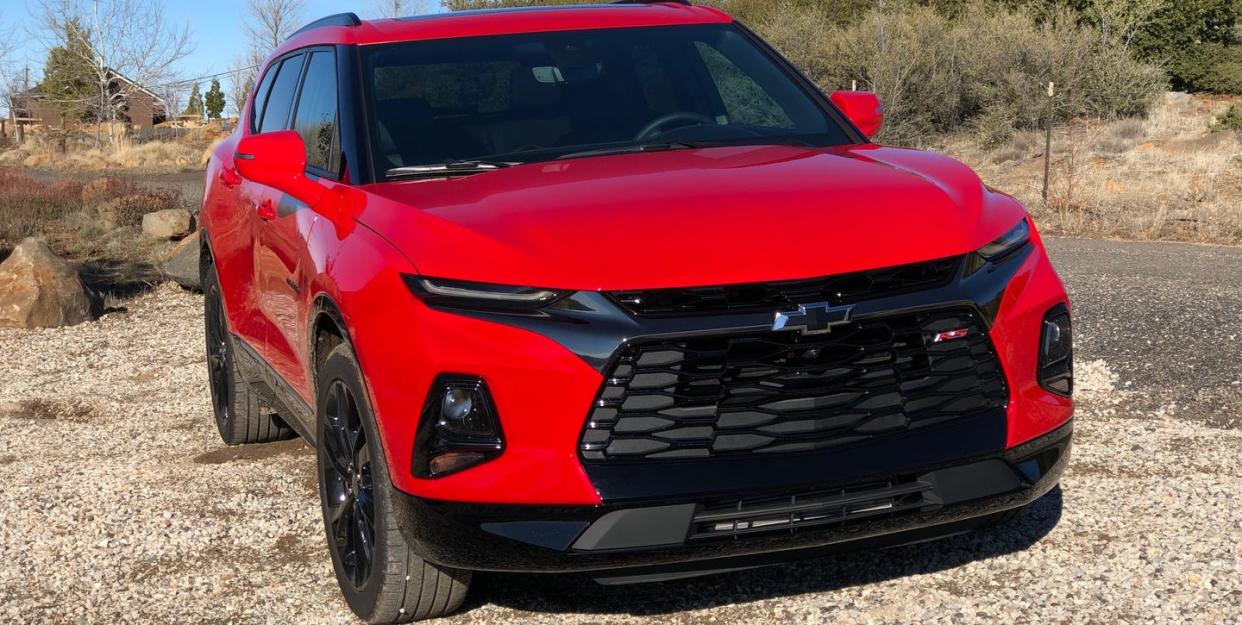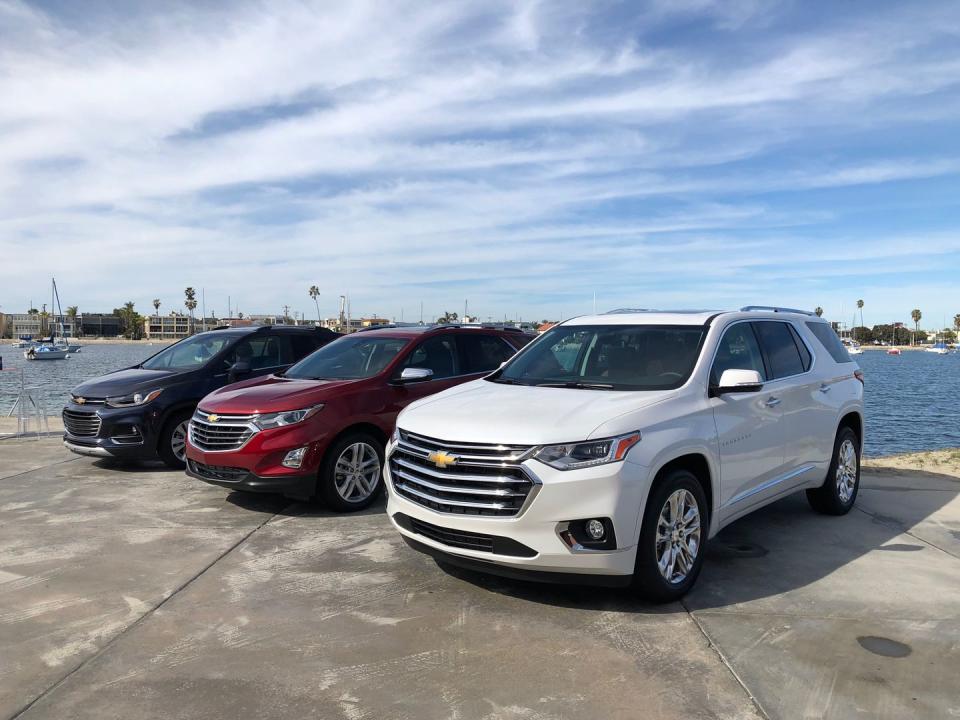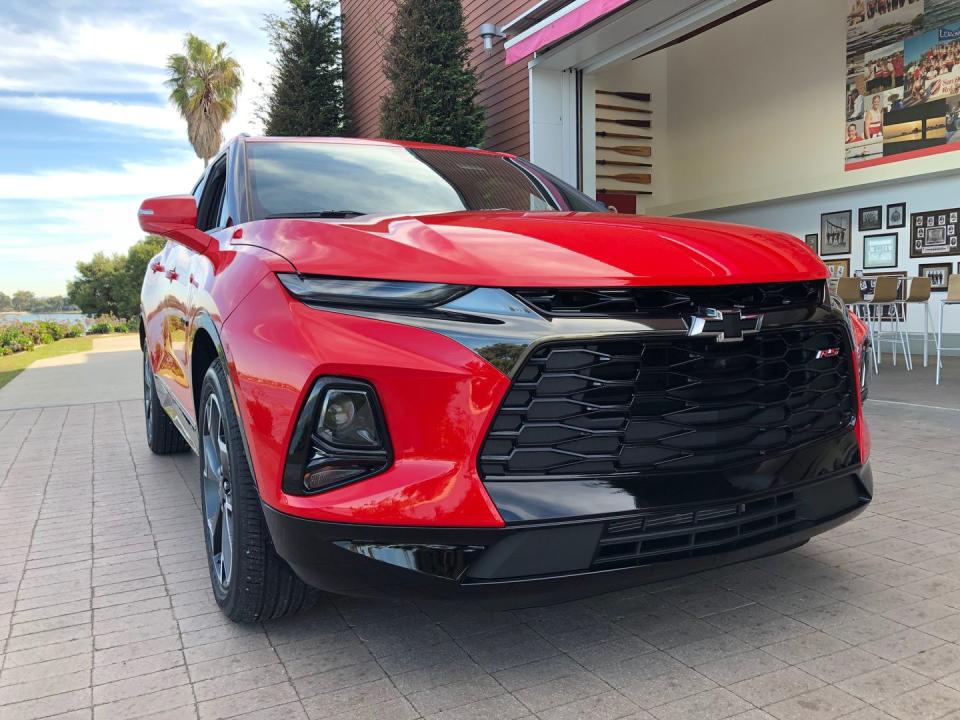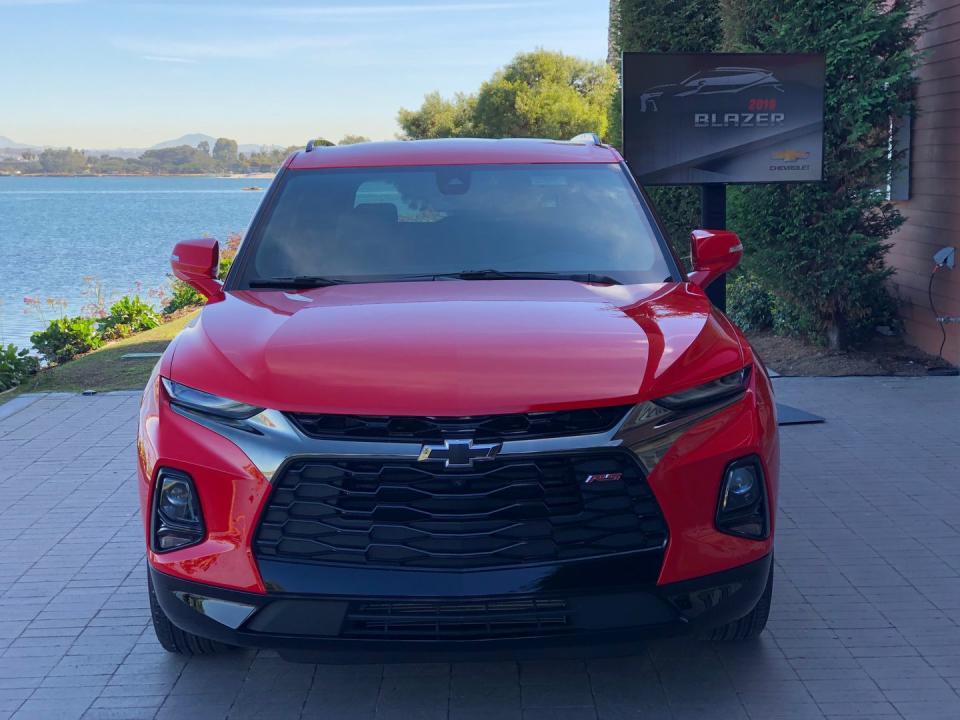2019 Chevy Blazer Test Drive: What Happened When GM Tried To Make the Crossover Cool

Before we can talk about the Blazer, we have to talk about what it's not.
Revived nameplates are all around us. Ford resurrected the Ranger and Bronco badges; Toyota resuscitated the Supra. The reimagined models pay homage to the essence of the old cars and trucks, even if the looks and the specs are updated for 2020.
Less so the Blazer. The revived Chevy bears little resemblance to the beloved box on wheels of so many Reagan-era road trips. Instead, when Chevrolet revealed its revival in summer 2018, it showed off yet another svelte crossover-one that didn't look too different from the rest of the lineup. Cue the howls of disbelief from the Blazer faithful.
So what is GM's gambit? During our first drive in the 2019 Blazer, through the rugged passes and beach vistas of San Diego, the thinking began to shine through. To a crossover-loving country, Chevy has presented the tall ride they demand with the mean looks of a Camaro's front end, as well a heap of smart engineering meant to overcome the Achilles' heel of high-riding SUVs: that they can't corner like cars because of their height. Here's how the company did it.
Larry Mihalko, the engineering lead on the 2019 Blazer, admits this was a function-follows-form car. The design team sketched out a squat, wide crossover with sporty lines and an aggressive end, and sent the engineers off to build it.
The real-world realization of that sketchbook dream was realized by building upon the platform shared by the GMC Acadia and Cadillac XT5. But the Blazer is no clone of either car. It's as wide as the larger Chevy Traverse, but as short as the smaller Chevy Equinox.
If Chevy sells a bunch of these Blazers, it'll be because of what happens when a person first sees the front end. Changes measured in millimeters sound indecipherable, the kind of tweaks only an engineer doing drag coefficient testing down to the twelfth decimal place wold notice. But the Blazer looks hot, especially in the black and red of its RS guise, and the slim eyes borrowed from the current Camaro do their job. The design is especially stark if you see the Blazer next to a row of Chevy's current crossovers, like we did at the San Diego Rowing Club. The Trax, Equinox, and Traverse are bland and forgettable by comparison.

When someone asks Mihalko if Chevy thinks of the new Blazer as the Camaro of crossovers, the humble engineer demurs. But the question hovers over this ride: Does it have the muscle to back up the flex?
Yes, and no. If you want to talk about straight-line speed, the Blazer won't blow you away. Neither the base model 193-hp 2.5-liter four-cylinder nor the pricier 308-hp 3.6-liter V-6 propel the car with much gusto. The Blazer will get up to interstate speed, sure, but there's a lag when the foot hits the gas. This is not an urgent vehicle. It's not the kind of car that wants to speed.
The performance is in the corners, and here is where the GM engineers deserve some applause. Tall cars feel tall-even crossovers that are built on car platforms as opposed to the more rough-and-tumble SUVs of years gone by. Even SUVs by performance brands like Porsche give you a little of the uh-oh feeling if you take a turn too fast, the high center of gravity becoming immediately apparent.
Chevy did a couple of smart things to attack the problem besides just making the Blazer lower and wider. Let's start with torque vectoring. Blazer makes 3,000 lb-ft of torque in sum, but can direct up to 1,750 in either direction if the car senses that one side requires more through a tight maneuver. Active yaw control, featuring a twin-clutch rear differential, keeps the Blazer level through the corners.
The Blazer in RS trim, in particular, is a driver's car. In a color scheme that would make the White Stripes proud-blacked-out-bowtie grille logo, scarlet accents all over the coal-black interior-the RS is the fullest realization of Chevy's attempt at a cool crossover aesthetic.
And it's not all flash over substance. The RS gets tech advancements to make it a more capable cornering machine, including sport dampers that deliver 40 percent more compression control in the front struts, a 15.1 to 1 steering ratio, down from 16.1 to 1 in the base Blazer and the Premier. This is the one Chevy wanted us to drive in the winding, hilly scrub above San Diego, and the RS impresses, inspiring confidence through turns where a car this tall should fear to tread. (You'll pay for it, though. The RS starts north of $41,000, compared to the $29,995 base price of the low-end Blazer L.)

Besides looks and cornering, tech is the other place where Chevy believes Blazer will stand out from a crowded crossover space. Blazer can come with the kind of adaptive cruise control and lane-keeping assists now common as safety features, but its nanny tech isn't as intrusive as what you'd find on, say, a Toyota RAV4. Where Toyota's feels like the car is actively turning itself, taking over to do more of the driving for you, Chevy's feels like more of a just-in-case precaution that pretty much leaves the steering to the driver.
What's notable are the small features meant to make the Blazer feel just a little more clever than its kin. Plenty of vehicles now feature a hands-free liftgate that allows you to open the back with a wave of your foot, just in case your hands are full of groceries. The Blazer shines an LED bowtie logo onto the ground, showing where to aim your foot.
Once the rear is open, you'll find other cool tricks. A button on either side will fold down the rear seats, meaning you can access the full cargo space without opening the rear passenger doors to fiddle with levers. Two metal tracks stretch across the cargo space; they're there to hold a gate that snaps in to separate one half of your stuff from the other half. When not needed, the divider hides down below in the spare-tire compartment.
Up front, you'll find an "umbrella rack" in either front door-that is, a second compartment above the primary store space into which a parasol could slide. Blazer is equipped with up-to-the-minute USB-C ports as well.

This reimagining of a Blazer isn't entirely without nods to its glory years of right angles and off-roading. This is an all-wheel-drive ride, though it can be dialed back to 2WD on the fly to save fuel. An add-on towing package brings 4,500 pounds of hauling capacity, though the base EcoTech four-cylinder can carry just 1,500 pounds-enough for a couple of JetSkis.
To potential buyers bummed out that the Blazer isn't more of a beast, Chevy points out that the rugged body-on-frame SUV lives on the form of the Tahoe. Which is true. Meanwhile, this Blazer is a bet. It's GM wagering that a name with decades of enthusiast cachet can propel a new sort of ride: a performance crossover for people who want a pop of style on their practical commuter and just enough under the sheet metal to back it up.
('You Might Also Like',)

